What's the difference between iPhones?

iPhone buyers guide: Explaining the differences between iPhone 5s, iPhone 5c, and iPhone 4s, and how to figure out which one is right for you
While 'iPhone' often sounds like one, iconic thing, Apple has fielded many different models, and an incredible array of variants over the years. This year there's the state-of-the-art iPhone 5s, the pop-art iPhone 5c, and the held-over iPhone 4s. Sure, 5 sounds higher than 4, but what's the real difference between all these models? Does more money really get you more features, does saving up-front cost you in the long run, and how much phone do you really need? If you're looking to get your first iPhone, or looking to get one for family or friends, figuring it all out can be confusing. Here's what you need to know!
- Read the complete iPhone 5s review
- Read the complete iPhone 5c review
- Read the complete iPhone 4s review
Products and price points

Apple's 2013 iPhone lineup consists of 3 different models, the iPhone 5s, iPhone 5c, and iPhone 4s. Here are the models and price points, both on and off contract.
- $0/$450 - iPhone 4s 8GB
- $99/$549 - iPhone 5c 16GB
- $199/$649 - iPhone 5c 32GB
- $199/$649 - iPhone 5s 16GB
- $299/$749 - iPhone 5s 32GB
- $399/$849 - iPhone 5s 64GB
Yes, the 32GB iPhone 5c is the same price as the 16GB iPhone 5s. One has more storage, the other higher specs. Price, it turns out, isn't the only factor!
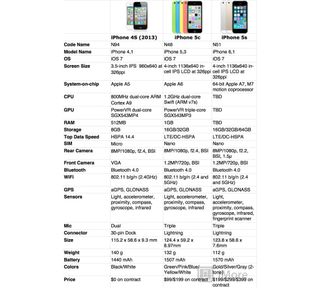
Storage

You can get and iPhone 5s with 16GB, 32GB, or 64GB of storage. It's the only iPhone that currently offers a 64GB option so if you need the most space, this is the one to get.
You can get an iPhone 5c with 16GB or 32GB of storage. So, if you don't need an extreme amount of storage, you can get a 32GB iPhone 5c for the same price as a 16GB iPhone 5s.
You can get an iPhone 4s with 8GB of storage. Frankly, we can't recommend this amount of storage for anyone. If you plan on downloading any amount of apps or media, it'll just end in frustration.
Colors

The iPhone 5s comes with two difference choices of faceplates and three metallic finishes, including white and gold, white and silver, and black and space gray. Verging on jewelry, they all look very high-end, and very premium.
Master your iPhone in minutes
iMore offers spot-on advice and guidance from our team of experts, with decades of Apple device experience to lean on. Learn more with iMore!
The iPhone 5c comes in five combinations of black faceplates and bright, candy-colored plastic shells, including yellow, pink (salmon), green, blue, and white. Like pop-art, they're fun and coordinate incredibly well with the wallpaper and background on the software.
The iPhone 4s comes in either white or black. Single-toned, unlike the newer iPhones, they're also glass front and back which means there''s no safe side to drop them on.
Displays

The iPhone 5s and iPhone 5c have gorgeous, widescreen 4-inch displays at 1136x640 that makes it look like apps, images, and videos are painted inside the glass. They also have excellent viewing angles. These are both bigger and better.
The iPhone 4s has a great looking 3.5 inch display at 960x640 with an excellent viewing angle. These days it almost looks a little cramped.
Size and weight
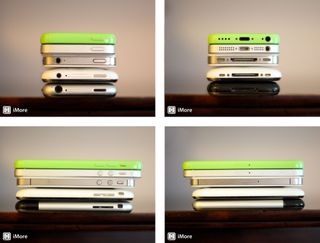
The iPhone 5s is the thinnest and lightest iPhone. It's so thin and light, it almost feels like they forgot to put anything inside it. It's 4.87 inches (123.8 mm) x 2.31 inches (58.6 mm) x 0.30 inch (7.6 mm) and weighs in at 3.95 ounces (112 grams). If you want something that disappears into your pocket, this is it.
The iPhone 5c is slightly thicker and heavier, thanks to its bigger plastic shell. It's 4.90 inches (124.4 mm), 2.33 inches (59.2 mm) x 0.35 inch (8.97 mm) and weighs 4.65 ounces (132 grams). While bulkier, it is by no means bulky.
The iPhone 4s is the squattest and heaviest of the iPhones, thanks to its shorter screen and thicker body. It's 4.5 inches (115.2 mm) x 2.31 inches (58.6 mm) x 0.37 inch (9.3 mm) and weighs 4.9 ounces (140 grams). Compared to newer iPhones, this one feels weighty in the hand.
Power
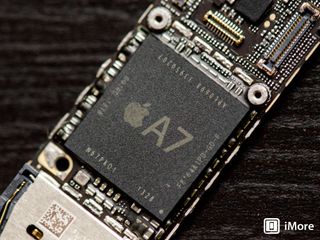
The iPhone 5s is powered by the 2013 Apple A7 chipset and Apple M7 motion coprocessor. It's the same 64-bit, Open GL ES 3.0 chip that's inside the latest iPads, and the most powerful processor ever put into a phone. (It could just as easily drive a netbook. Which is insane.)
The iPhone 5c is powered by the 2012 Apple A6 chipset. It has no coprocessors but is still capable of good performance.
The iPhone 4s is powered by the 2012 Apple A5 chipset. It's still capable of driving the phone, but it's nowhere nearly as future proof as current chipsets.
Sensors
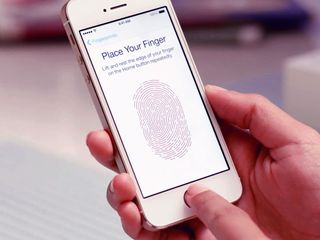
The iPhone 5s is the only iPhone with Touch ID, a fingerprint identity sensor that lets you unlock and purchase apps with the touch of a finger. It also includes a three-axis gyroscope, accelerometer, proximity sensor, ambient light sensor.
The iPhone 5c and iPhone 4s include three-axis gyroscopes, accelerometers, proximity sensors, and ambient light sensors.
Carriers and LTE

The iPhone 5s supports the most LTE bands of any single phone in history. You can get it GSM unlocked, which means you should be able to use it pretty much anywhere and everywhere.
The iPhone 5c has the same great LTE and carrier support as the iPhone 5s. You can likewise get it unlocked and use it just about anywhere.
The iPhone 4s has 3G carrier support. You can also get it unlocked and use it in most places. Because CDMA 3G (Verizon and Sprint) is much, much slower than GSM 3G (AT&T, T-Mobile), iPhone 4s performance can vary greatly between those networks.
Wi-Fi, Bluetooth, and location

The iPhone 5s and iPhone 5c support up to 802.11n Wi-Fi on both 2.4 and 5GHz. They also both support Bluetooth 4.0 as well as GPS and GLONASS.
The iPhone 4s supports up to 802.11n on 2.4GHz only. It also supports Bluetooth 4.0 as well as GPS and GLONASS.
iSight rear-facing cameras

iPhone 5s, iPhone 5c, and iPhone 4s all have iSight cameras with 8 megapixel stills and 30fps 1080p video, backside illuminated sensors with 5-elements, hybrid infrared filters, geotagging, face detection, auto- and tap-to-focus, auto stabilization, and panorama modes.
The iPhone 5c has an f/2.2 aperture and dual true-tone flash. The iPhone 5c and iPhone 4s both have f/2.4 apertures and single LED flashes.
The iPhone 5s and iPhone 5c both have sapphire crystal lens covers, 3x digital video zoom, and the ability to take still photos while shooting video.
The iPhone 5s can also record 120fps slow-motion video. It's one of the best camera phones on the market, and the absolute best camera on a 4-inch or under phone.
FaceTime front-facing cameras
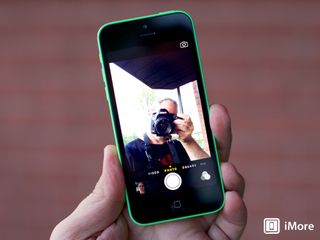
The iPhone 5s and iPhone 5c both have 1.2 megapixel, 720p FaceTime HD video cameras with backside illuminated sensors.
The iPhone 4s has a VGA (480p) camera.
Battery life
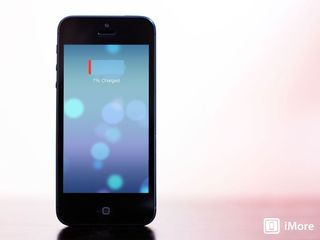
The iPhone 5s and iPhone 5c both support up to 10 hours of 3G talk time, LTE or Wi-Fi web browsing, or video playback, up to 40 hours of audio playback, and up to 250 hours of standby. Depending on how much or how hard you use them, both will last you the day.
The iPhone 4s supports up to 8 hours of 3G talk time, up to 6 hours of 3G or 9 hours of Wi-Fi web browsing, up to 10 hours of video playback, up to 40 hours of audio playback, and up to 200 hours of standby.
Connectors
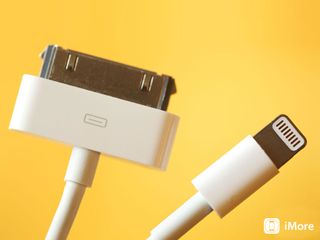
Both the iPhone 5s and iPhone 5c use the new, intelligent Lightning connector. That means they'll work with all the latest accessories and peripherals, now and into the future.
The iPhone 4s uses the old 30-pin Dock connector. That means it'll work with older accessories, but not new ones.
Software and services
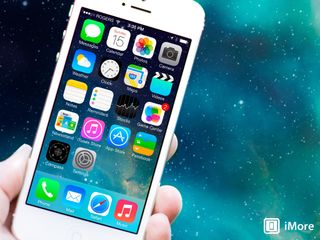
The iPhone 5s, iPhone 5c, and iPhone 4s all run iOS 7 and connect to iCloud. That means you can run all the latest software from the [App Store](http://www.imore.com/app-store - over 1 million apps and growing - as well as manage all your email, calendars, contacts, backup your data, and more.
Bottom Line
The iPhone 5s is something from the future. It includes the Touch ID sensor, one of the best cameras ever to grace a phone, and the highest storage option. If you want state-of-the-art, you want the iPhone 5s.
The iPhone 5c is all about today. It's less expensive but arguably even more fun. If you want pop-art, you want the iPhone 5c.
The iPhone 4s is the past. It has an old screen resolution, supports only older 3G cellular connections, and while the camera is still good, the 8GB of storage is almost maddening. If you want an iPhone in name only, you might be able to make do with an iPhone 4s.

Rene Ritchie is one of the most respected Apple analysts in the business, reaching a combined audience of over 40 million readers a month. His YouTube channel, Vector, has over 90 thousand subscribers and 14 million views and his podcasts, including Debug, have been downloaded over 20 million times. He also regularly co-hosts MacBreak Weekly for the TWiT network and co-hosted CES Live! and Talk Mobile. Based in Montreal, Rene is a former director of product marketing, web developer, and graphic designer. He's authored several books and appeared on numerous television and radio segments to discuss Apple and the technology industry. When not working, he likes to cook, grapple, and spend time with his friends and family.

Want better iPhone photo quality without taking up lots of storage? You’re not using your 48MP camera properly unless you use this HEIF Max tip

2024 "might be a turning point for Apple" — suppliers look elsewhere as Apple faces "frightening" question with no clear answer

Apple's entire M4 Mac lineup just leaked — here's where Apple is taking computing next
Most Popular





